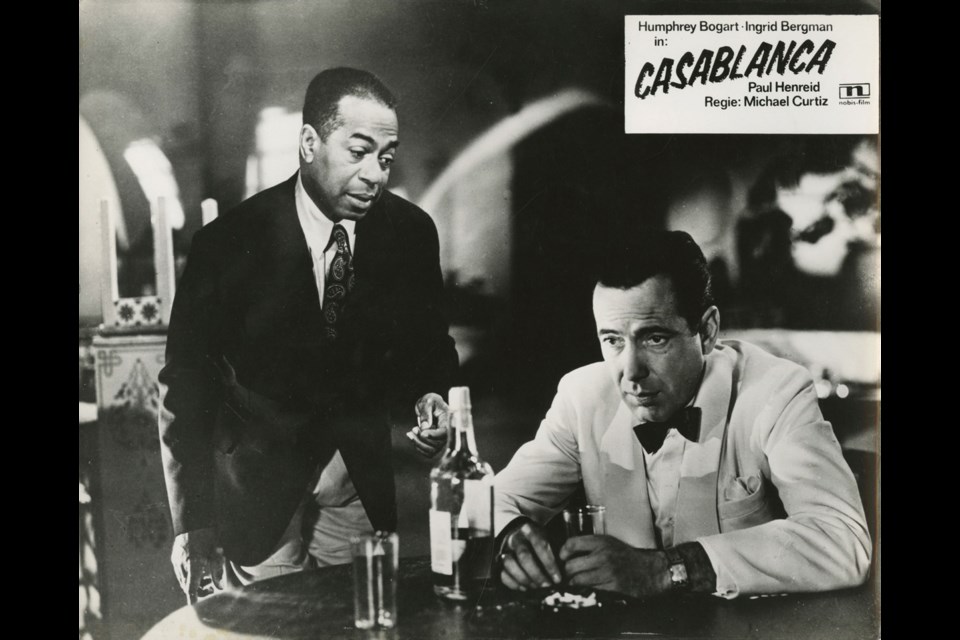We’ll Always Have Casablanca: The Life, Legend, and Afterlife of Hollywood’s Most Beloved Movie
By Noah Isenberg
W.W. Norton & Co., 334 pp., $36.95
Casablanca isn’t only one of the most loved movies of all time; it’s also one of the most written-about movies of all time.
Critics, fans and obsessives have used everything from poetry to cookbooks to celebrate one of Hollywood’s singular creations. Noah Isenberg, director of screen studies and professor of culture and media at The New School, does a good job of synthesizing all of them — well, except for the cookbooks — in We’ll Always Have Casablanca: The Life, Legend, and Afterlife of Hollywood’s Most Beloved Movie.
Junkies might not find a lot of new insights, but We’ll Always Have Casablanca is a hugely readable and entertaining look at how Casablanca came to be, and how it came to be such an indelible part of American pop culture.
As has been told many times, Casablanca got its start in a 1940 play called Everybody Comes to Rick’s, by Murray Burnett and Joan Alison, about an American nightclub owner in Morocco named Rick who helps a former lover and the man in her life, a leader in the anti-Nazi underground, escape the Germans. (In the movie, Humphrey Bogart is Rick, with Ingrid Bergman as the ex-flame and Paul Henreid as the underground leader.)
While the play has been dismissed as so-so drama, Isenberg notes that much of what makes Casablanca Casablanca was in Everybody Comes to Rick’s, including the use of As Time Goes By as “their song.”
Although Warner Bros., which bought the rights to the play, put some of its most talented writers and director Michael Curtiz on the case, casting was crucial. Contrary to reports that Ronald Reagan and Ann Sheridan would star in it, Bogart and Bergman were the preferred choices early on, and the supporting cast was filled with old pros who never missed their marks.
In one of the book’s most compelling chapters, Isenberg shows how indebted Casablanca was to the many actors and extras in the cast who were refugees who had fled Hitler-dominated Europe.
“When shooting the Paris flashback scene of Rick and Ilsa at the French sidewalk cafe, in which the pair asks themselves how long it will be until the Germans storm the capital, one of the female extras burst into inconsolable tears,” Isenberg writes. “A small bearded man, another extra on the set, purportedly walked over to the director and tapped him on the shoulder. ‘I am very sorry, sir,’ he said to Curtiz. ‘But that is my wife. Please pardon her. You see, our home was in Paris. And we went through that awful day.’”
Casablanca was an immediate hit and won three Oscars, including for best picture. It gained a sheen of hipness in the 1950s, with help from French New Wave critics and U.S. campus film societies.
Since then, the movie has only gotten bigger: It ranks No. 2 on the American Film Institute’s 100 best movies (Citizen Kane is No. 1) and No. 1 on AFI’s list of 100 most romantic movies, with six quotes on AFI’s top 100 movie quotes list and No. 2 on AFI’s best movie songs list (As Time Goes By).
As Isenberg points out, by the time he started work on We’ll Always Have Casablanca, nearly everyone involved in its making had died. Undeterred, he drilled deep; my favourite deep-cut source of his is the unpublished German-language typescript of what became the memoir of Lotte Palfi, a refugee who played a woman trying to sell diamonds in Rick’s in the opening scene.
Through Isenberg’s capable synthesis, reading We’ll Always Have Casablanca will almost certainly make you want to watch it again.
And that can only lead to the rekindling of a beautiful friendship.



